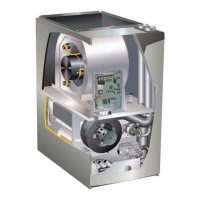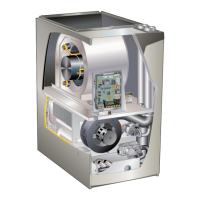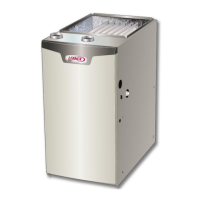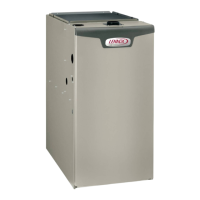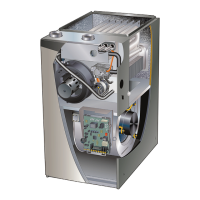Page 13
TABLE 4
PIPING AND FITTINGS SPECIFICATIONS
Schedule 40 PVC (Pipe) D1785
Schedule 40 PVC (Cellular Core Pipe) F891
Schedule 40 PVC (Fittings) D2466
Schedule 40 CPVC (Pipe) F441
Schedule 40 CPVC (Fittings) F438
SDR-21 PVC or SDR-26 PVC (Pipe) D2241
SDR-21 CPVC or SDR-26 CPVC (Pipe) F442
Schedule 40 ABS Cellular Core DWV
(Pipe)
F628
Schedule 40 ABS (Pipe) D1527
Schedule 40 ABS (Fittings) D2468
ABS-DWV (Drain Waste & Vent) (Pipe &
Fittings)
D2661
PVC-DWV (Drain Waste & Vent) Pipe &
Fittings)
D2665
PRIMER & SOLVENT CEMENT
ASTM
SPECIFICATION
PVC & CPVC Primer F656
PVC Solvent Cement D2564
CPVC Solvent Cement F493
ABS Solvent Cement D2235
PVC/CPVC/ABS All Purpose Cement
For Fittings & Pipe of the same material
D2564, D2235,
F493
ABS to PVC or CPVC Transition Solvent
Cement
D3188
CANADA PIPE & FITTING & SOLVENT
CEMENT
MARKING
PVC & CPVC Pipe and Fittings
ULCS636
PVC & CPVC Solvent Cement
ABS to PVC or CPVC Transition
Cement
POLYPROPYLENE VENTING SYSTEM
PolyPro
®
by Duravent
InnoFlue
®
by Centrotherm
IMPORTANT
EL296DFE exhaust and intake connections are made
of PVC. Use PVC primer and solvent cement when
using PVC vent pipe. When using ABS vent pipe, use
transitional solvent cement to make connections to the
PVC ttings in the unit.
Use PVC primer and solvent cement or ABS solvent ce-
ment meeting ASTM specications, refer to TABLE 4.
As an alternate, use all purpose cement, to bond ABS,
PVC, or CPVC pipe when using ttings and pipe made of
the same materials. Use transition solvent cement when
bonding ABS to either PVC or CPVC.
Low temperature solvent cement is recommended during
cooler weather. Metal or plastic strapping may be used for
vent pipe hangers. Uniformly apply a liberal coat of PVC
primer for PVC or use a clean dry cloth for ABS to clean
inside socket surface of tting and male end of pipe to
depth of tting socket
Canadian Applications Only - Pipe, ttings, primer and
solvent cement used to vent (exhaust) this appliance must
be certied to ULC S636 and supplied by a single manu-
facturer as part of an approved vent (exhaust) system. In
addition, the rst three feet of vent pipe from the furnace
ue collar must be accessible for inspection.
Venting Options
The EL296DFE is shipped with vent exhaust / air intake
connection at the top cap. See FIGURE 20. Using parts
provided, the furnace may be eld modied to have these
connections on the right side of the furnace cabinet. See
FIGURE 23 and follow the steps below. For left side vent-
ing order kit 87W73.
1 - Remove inner blower door.
2 - Loosen hose clamps which attach rubber ttings to
the white PVC pipes inside the vestibule area. See
FIGURE 20.
3 - Loosen the clamp which secures the pipes at the
blower deck. See gure 20.
4 - Remove white PVC pipes, slide up and out thru the
top cap.
5 - Remove the black plastic tting in top cap which
previously aligned the PVC pipes.
6 - Remove the remaining parts of the pipe clamp at the
blower deck.
7 - Remove the sheet metal patch plate on the side
of the cabinet which covers the openings for side
venting option. Save screws for reuse.
8 - Re-use the patch plate to cover the hole in the top
cap. See FIGURE 21. Remove the 2 screws which
secure the top cap to the furnace on the right side
and re-install securing the right edge of the patch
plate and the right side of the top cap to the furnace.
Use 2 self-drilling sheet metal screws (provided) to
nish securing the left edge of the patch plate on the
left side.
9 - Use a utility knife to cut out the cabinet insulation
for the right side vent / air intake. 10 -Install the two
90° street elbows (provided) through the side of the
cabinet. The male side of each elbow should extend
down through the blower deck and connect to the
rubber ttings below. Once the elbows are properly
positioned, tighten each clamp.
10 - Install the two 90° street elbows (provided) through
the side of the cabinet. The male side of each
elbow should extend down through the blower deck
and connect to the rubber ttings below. Once the
elbows are properly positioned, tighten each clamp.
11 - Peel protective backing from side vent sealing
gaskets (2) and apply to side vent sealing plates (2)
as shown in FIGURE 23.

